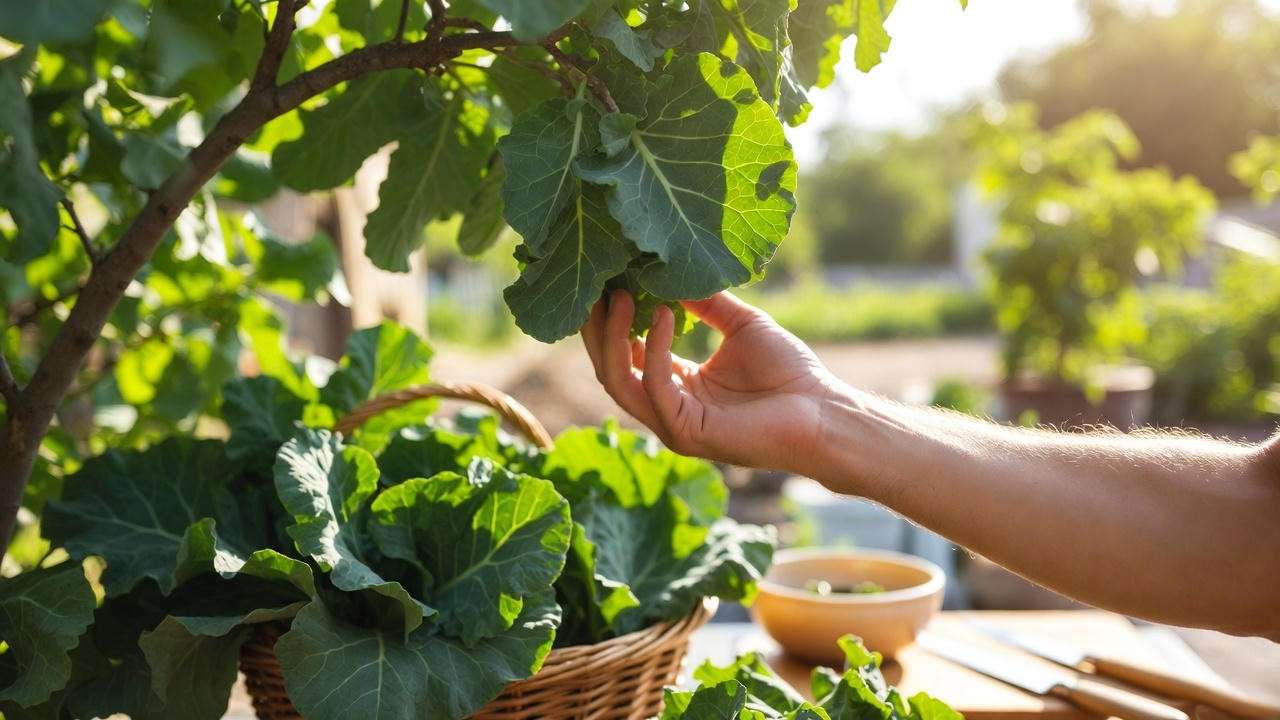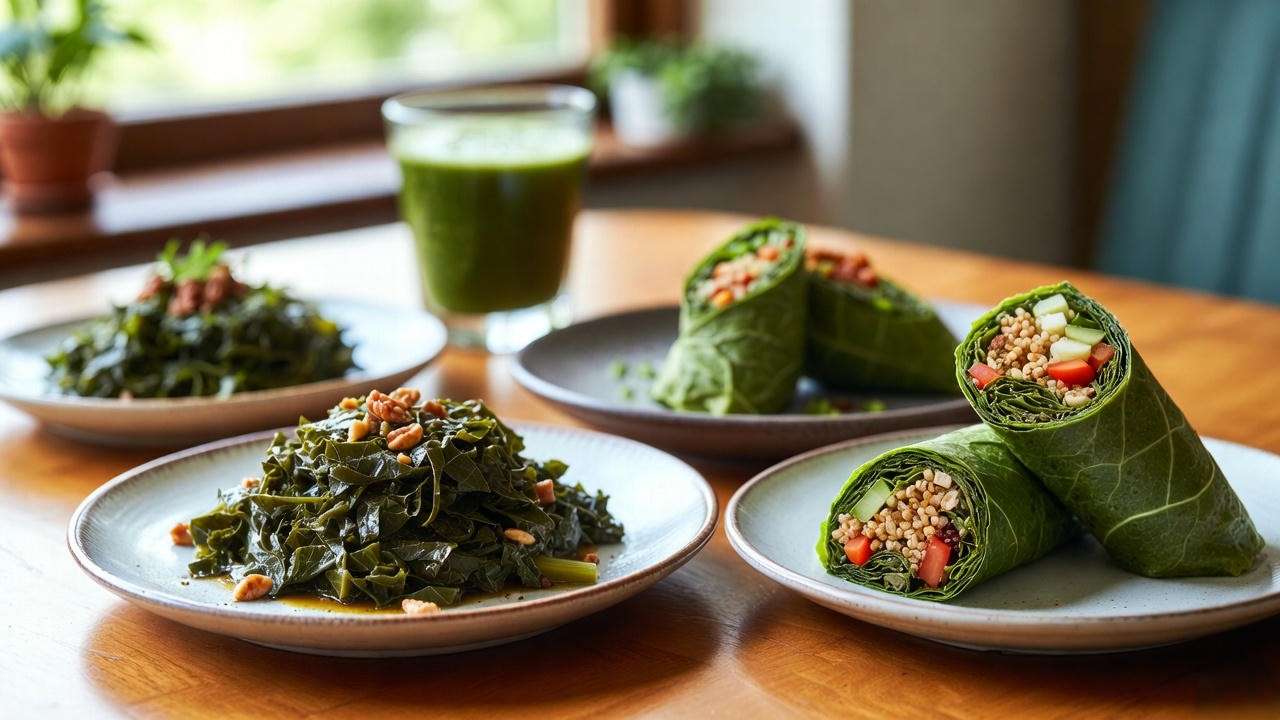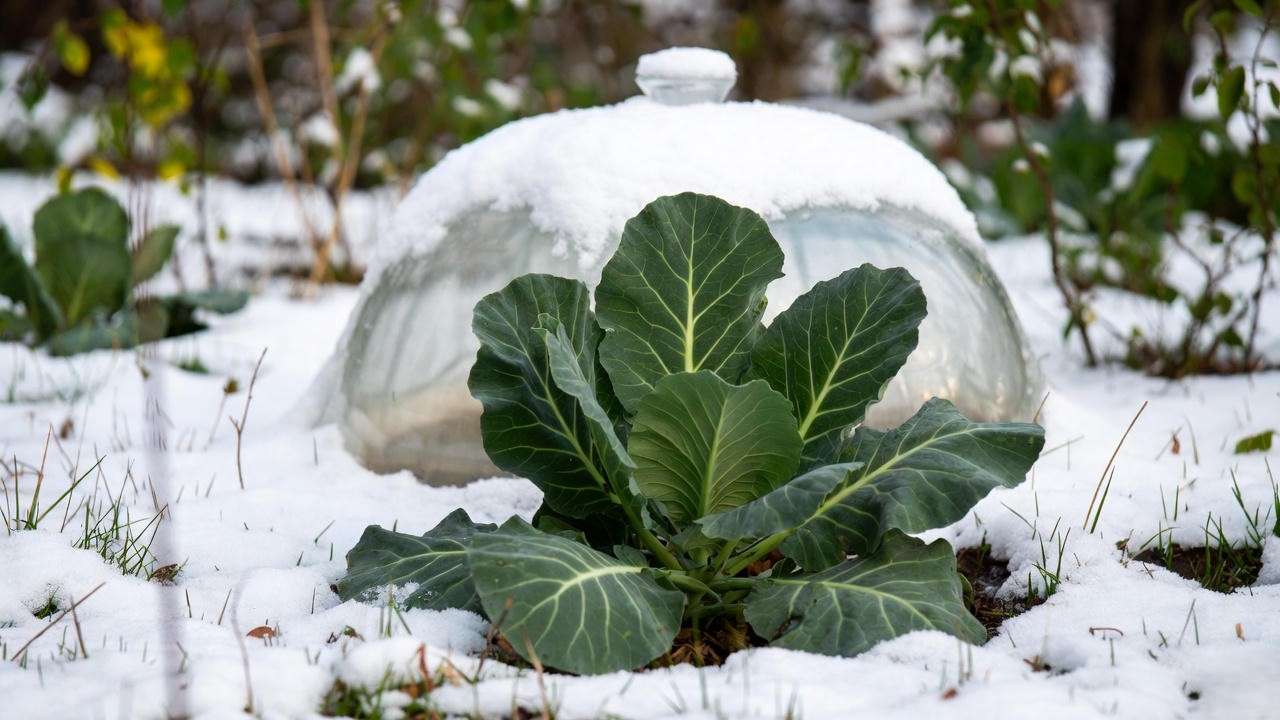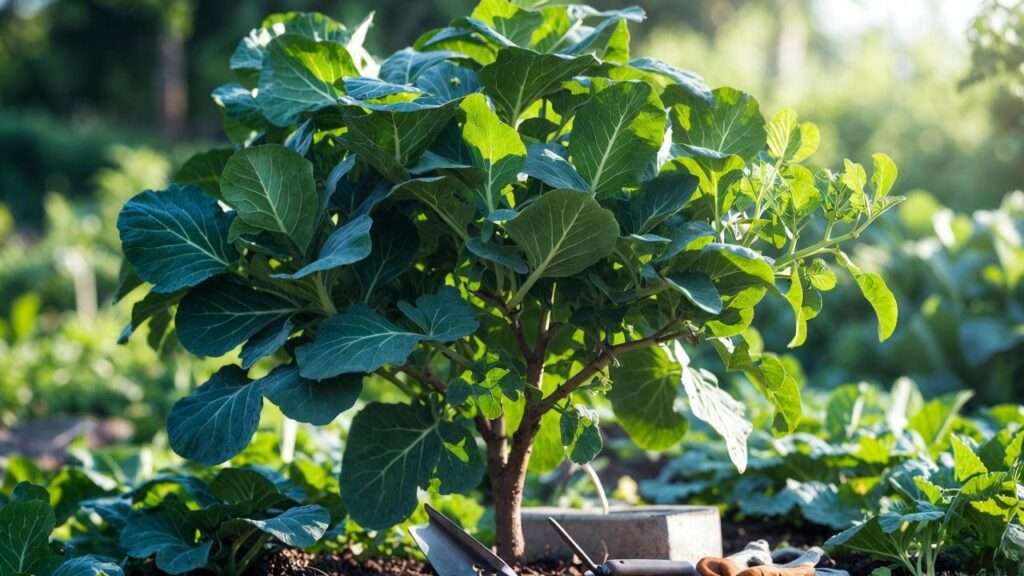Picture this: You step into your backyard and pluck vibrant, nutrient-packed collard greens from a stunning collard green tree, a unique plant that’s both a garden showstopper and a powerhouse of flavor. Whether you’re a seasoned gardener or a curious beginner, growing a collard green tree is an exciting way to elevate your plant care game. These “trees” — tall, stalky collard plants or grafted varieties — offer year-round harvests, rich nutrition, and surprisingly easy maintenance. In this comprehensive guide, we’ll walk you through every step to cultivate a thriving collard green tree, from planting to harvesting, with expert tips to ensure lush, healthy greens. 🌞
As a horticulture enthusiast with years of experience growing collard greens and collaborating with urban farmers, I’ve seen firsthand how these plants transform gardens and diets. Whether you’re searching for sustainable gardening ideas or ways to boost your homegrown veggie game, this article delivers actionable advice to make your collard green tree flourish. Let’s dig in! 🪴
What Is a Collard Green Tree? Debunking Myths and Understanding the Plant 🪴
The Science Behind Collard Green Trees
Collard greens (Brassica oleracea var. acephala) are leafy vegetables closely related to kale and cabbage, known for their robust flavor and nutritional density. The term “collard green tree” refers to collard plants trained to grow tall, often reaching 3–6 feet, or grafted onto sturdy rootstocks to mimic a tree-like structure. These plants produce broad, paddle-shaped leaves packed with vitamins A, C, K, and folate, making them a staple in healthy diets and sustainable gardens. Unlike true trees, collard green trees are biennials, completing their life cycle in two years, but with proper care, they can yield harvests for multiple seasons.
Common Misconceptions About Collard Green Trees
Many gardeners mistakenly believe collard green trees are a distinct species. In reality, they’re a cultivar of the Brassica family, selectively bred or trained for height and aesthetics. Another myth is that they’re high-maintenance. Truthfully, collards are beginner-friendly, thriving in diverse climates with minimal fuss. “Collards are the unsung heroes of the garden,” says Dr. Lena Harper, a botanist specializing in leafy greens. “Their resilience and versatility make them ideal for novice and expert growers alike.”
Why Grow a Collard Green Tree? Benefits for Your Garden and Health 🥗
Environmental and Aesthetic Advantages
Collard green trees are a boon for eco-conscious gardeners. Their vertical growth maximizes space, making them perfect for small backyards, urban balconies, or container gardens. A single plant can produce dozens of leaves, reducing your grocery bill and carbon footprint. Visually, their lush, emerald foliage adds a tropical vibe to landscapes, enhancing curb appeal year-round. Plus, collards attract pollinators like bees, supporting local biodiversity.
Health and Culinary Perks
Collard greens are a nutritional powerhouse, rich in antioxidants, fiber, and calcium. Regular consumption supports heart health, digestion, and immunity. In the kitchen, their sturdy leaves shine in diverse dishes — think Southern-style braised collards, fresh wraps, or green smoothies. Growing your own ensures pesticide-free, farm-fresh quality at a fraction of store prices.
Quick Recipe Idea: Try collard green wraps! Fill blanched leaves with hummus, grilled veggies, and quinoa for a nutritious, portable meal. 🥙
Step-by-Step Guide to Planting Your Collard Green Tree 🌱
Choosing the Right Variety
Selecting the right collard cultivar sets the stage for success. Popular varieties like ‘Georgia Southern’ offer classic flavor and heat tolerance, while ‘Champion’ boasts compact growth for smaller spaces. ‘Morris Heading’ is ideal for tree-like structures, forming loose heads that elongate with pruning. Check with local nurseries or seed catalogs to find climate-adapted options, especially if you live in extreme hot or cold regions.

Preparing the Soil and Location
Collards thrive in well-draining, loamy soil with a pH of 6.0–6.5. Test your soil with a home kit and amend with compost or aged manure to boost fertility. Choose a spot with at least 6 hours of direct sunlight daily — more is better. For container gardening, opt for a 10-gallon pot with drainage holes to accommodate the plant’s deep roots.
Planting Techniques for Success
Plant collards in early spring or fall, when temperatures range from 50–75°F, to avoid bolting. Space seedlings 18–24 inches apart to ensure air circulation and reduce disease risk. Dig a hole twice the root ball’s width, place the seedling, and backfill with soil, pressing gently. Water thoroughly after planting. For a visual guide, consider this: Last year, my neighbor Sarah grew a 5-foot ‘Morris Heading’ collard by following these exact steps, harvesting leaves for 18 months!
Essential Care Tips for a Thriving Collard Green Tree 🌞
Watering and Feeding
Consistent moisture is key to healthy collard green trees. Aim for 1 inch of water per week, adjusting for rainfall. Water deeply at the base to encourage strong roots, avoiding overhead watering to prevent fungal issues. Feed plants every 4–6 weeks with organic compost or a balanced 10-10-10 fertilizer. Mulch with straw or wood chips to retain moisture and suppress weeds.
Pruning and Training for Tree-Like Growth
To achieve that iconic tree-like shape, prune lower leaves monthly, leaving the top 6–8 inches of foliage. Use clean, sharp shears to avoid disease spread. For taller plants, stake with bamboo or a metal rod to support the stem. Regular pruning not only shapes the plant but also stimulates new growth, extending your harvest.

Pest and Disease Management
Collards face threats from pests like aphids, cabbage worms, and flea beetles. Inspect leaves weekly and use neem oil or insecticidal soap for organic control. Companion planting with marigolds or garlic deters pests naturally. To prevent diseases like powdery mildew, ensure proper spacing and avoid overwatering. Crop rotation every 2–3 years keeps soil healthy.
Expert Tip: Plant collards near legumes like beans to naturally enrich soil with nitrogen. 🌱
Troubleshooting Common Collard Green Tree Problems 🐛
Yellowing Leaves or Stunted Growth
Yellow leaves often signal nutrient deficiencies, overwatering, or improper soil pH. Test your soil and adjust with lime (to raise pH) or sulfur (to lower it). If overwatering is the culprit, reduce frequency and ensure proper drainage. A foliar spray of liquid seaweed can quickly boost nutrient uptake.
Pest Infestations or Bolting
Bolting — when collards flower prematurely — occurs in hot weather. Use shade cloths or plant heat-tolerant varieties to prevent it. For pest issues, try integrated pest management (IPM): hand-pick caterpillars, introduce beneficial insects like ladybugs, and maintain garden hygiene.
FAQs:
- Why is my collard green tree not growing tall? Check for compacted soil or insufficient sunlight.
- Can I grow collards indoors? Yes, with grow lights and a large pot, but outdoor conditions are ideal.
Harvesting and Using Your Collard Green Tree 🌿
When and How to Harvest
Harvesting your collard green tree is one of the most rewarding parts of the journey! Begin when outer leaves reach 8–10 inches long, typically 60–75 days after planting, depending on the variety. Use clean, sharp scissors to cut leaves at the base, leaving the central bud intact to encourage regrowth. For continuous harvests, pick only a few leaves per plant at a time, working from the bottom up. Store harvested greens in the refrigerator, wrapped in damp paper towels, for up to 2 weeks. For the best flavor and nutrient content, harvest in the morning when leaves are crisp and hydrated.

Creative Ways to Enjoy Collard Greens
Collard greens are incredibly versatile in the kitchen. Their robust texture holds up in hearty dishes like Southern-style braised collards with garlic and smoked paprika. For a modern twist, blend them into green smoothies with pineapple and ginger, or use them as low-carb wraps stuffed with grilled chicken and avocado. Feeling adventurous? Ferment collards with salt and spices for a probiotic-rich side dish. To preserve your harvest, blanch and freeze leaves in airtight bags for year-round use.
Pro Tip: Lightly massage collard leaves with olive oil and lemon juice to soften them for raw salads. 🥗

Advanced Tips for Maximizing Your Collard Green Tree’s Potential 🚀
Companion Planting for Better Yields
Companion planting can supercharge your collard green tree’s growth. Pair collards with onions, garlic, or herbs like dill, which repel pests and enhance soil health. Marigolds are another excellent choice, deterring nematodes and adding vibrant color to your garden. Avoid planting collards near strawberries or tomatoes, as they compete for nutrients and attract similar pests. By strategically planning your garden layout, you’ll boost yields and reduce maintenance.
Overwintering and Year-Round Growth
In mild climates, collard green trees thrive year-round with minimal protection. For colder regions, use row covers, cloches, or cold frames to shield plants from frost—collards can tolerate temperatures as low as 20°F. In hot climates, provide afternoon shade with breathable fabric to prevent bolting. Last winter, a community garden in Asheville, North Carolina, successfully overwintered ‘Georgia Southern’ collards using straw mulch and burlap wraps, harvesting leaves through February. With these strategies, you can enjoy fresh greens in any season.
Case Study: The Asheville garden’s success highlights how collards’ cold tolerance makes them a staple for year-round gardening.

FAQs About Growing Collard Green Trees ❓
Q1: How long does it take for a collard green tree to grow?
Most collard varieties reach harvestable size in 60–75 days, but “tree-like” height (3–6 feet) may take 4–6 months with proper pruning and care.
Q2: Can collard green trees survive frost?
Yes! Collards are cold-hardy and often taste sweeter after a light frost. Use row covers for protection below 20°F.
Q3: What’s the best way to propagate collard greens?
Collards are typically grown from seeds or seedlings. While propagation from cuttings is possible, it’s less common due to slower growth.
Q4: Are collard green trees suitable for beginners?
Absolutely! Their resilience, low maintenance, and forgiving nature make them ideal for novice gardeners.
Purpose: These FAQs address common reader queries, enhancing SEO by targeting long-tail keywords like “how long do collard green trees take to grow” and improving user engagement.
Conclusion: Start Growing Your Collard Green Tree Today! 🌟
Growing a collard green tree is more than just gardening—it’s a journey toward sustainability, health, and the joy of homegrown food. From selecting the perfect variety to mastering pruning and harvesting, this guide has equipped you with everything you need to cultivate lush, thriving greens. Whether you’re savoring fresh collard wraps or sharing your harvest with neighbors, your collard green tree will be a source of pride and nourishment. Ready to get started? Grab some seeds, prepare your soil, and watch your garden transform. Share your progress in the comments or tag us on social media—we’d love to see your collard green tree thrive! For more plant care tips, check out our articles on “Top 10 Leafy Greens for Beginners” or “Organic Pest Control Strategies.” Happy gardening! 🌱













